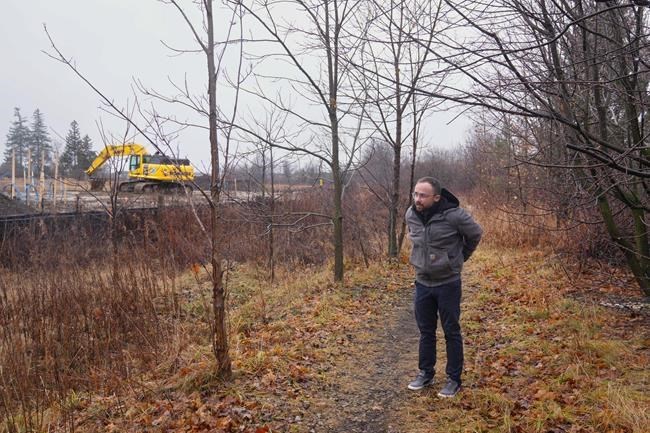Setting aside money for worthy causes can be a challenge, but one option that's gaining momentum both gives back and a offers a good return on investment.
Community bonds pay out interest, and eventually return the initial capital, in the same way as more conventional bonds, but the money is directed to social projects, and the not-for-profit entity that initiates one is responsible for the guarantee.
Habitat for Humanity Guelph Wellington in southwestern Ontario used the model to raise money for two affordable housing projects it’s developing. It broke ground on the first, a 32-unit townhouse project, in November.
The group was able to use the money raised through the bond as an anchor to raise further construction financing, said Ryan Deska, director of engagement and development.
“So the community bond is a way for us to leverage the collective wealth of the community," he said.
"It's one of the puzzle pieces that help us to move a project forward.”
The group raised about $4.5 million through the model, he said, offering 7.25 per cent interest for a two-year term, or a one-year term that paid 6.85 per cent, both with a minimum $10,000 investment. They also offered a five per cent fixed rate with a minimum investment of $2,500.
Investors ranged from a local developer that committed $1.5 million, to residents putting in a few thousand dollars each.
“It's been a really exciting process because, you know, it's anyone from, like, a city bus driver popping in on their route to drop off a cheque, all the way through to people selling their homes and investing,” said Deska.
“When you extend that across a whole community and beyond, the numbers add up pretty quickly.”
Various models of raising money through community investments have been around for a while, though Toronto-based Centre for Social Innovation claims to have invented and issued the first community bond in 2010 to buy its first building.
Tapestry Community Capital emerged from an earlier form of community fundraising, using a co-operative model to help build Toronto's first wind turbine in 1998, and now helps numerous groups raise money though community bonds.
Affordable housing is a big focus these days in community bonds, said Jennifer Bryan, senior campaign manager at Tapestry, but they've also been used by groups working in areas like education, marginalized youth, and renewable energy — anywhere the investment can go toward a social benefit.
“You're getting a double return. You're investing in something great and getting that good feeling and supporting something awesome, while also getting a financial return,” said Bryan.
Unlike some other types of impact investing where there’s often a high investment threshold, many community bonds allow relatively small contributions.
“What we also love about them is they're inclusive,” said Bryan.
Kamloops, B.C.-based Propolis Housing Cooperative is using the model to raise $1.1 million to buy land, paying out between 2.5 and 3.5 per cent over three years, for its first affordable housing project.
The group was drawn to the idea of getting local buy-in for the project, said Lindsay Harris, president of Propolis.
“We really loved the idea of there being a component of the project that was really community led, that engaged community investors.”
She said it took them a while to find what model would work because community bonds haven’t been used as much in Western Canada, but the reception has been great so far with over $600,000 raised or pledged since launching the campaign in mid-June.
While the rates Propolis and many other community bonds offer are generally lower than what investors can get from a guaranteed investment certificate these days, there is still interest, said Harris.
"One of the huge benefits of community bonds is that people know that they're getting a financial return and a social return," she said.
"People are willing to take a slightly smaller financial return if they know that it's having a huge impact."
The model seems to work especially well in the early stages when a group is looking to secure a tangible asset like property, said Harris, because it gives investors a higher level of security.
Taking a close look at the security, or guarantee, of the investment is crucial because there are few regulations or protections for this relatively new model, said Patti Dolan, senior wealth advisor at Wellington-Altus Private Wealth.
Because the investments fall into a grey area between charity and investment, they also fall outside of the kind of products a financial advisor could sell or even recommend, and clients would have to hold them outside of investments managed by an advisor, she said.
She cautions potential investors to be aware of some of the longer lock-ins for these bonds, since there's no secondary market to sell them. Dolan also recommends taking a good look at the offering memorandum that breaks down what the money is for and how the project will be run.
"[Investors] really do need to do their homework, and then make the decision if it's something they're willing to support."
This report by The 91原创 Press was first published Dec. 28, 2023.
Ian Bickis, The 91原创 Press



